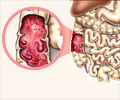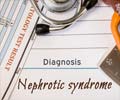Shivangi Saxena's Profile
M.Pharm (Pharmaceutics)

Shivangi's academic credentials include, an M. Pharm from Invertis University, Bareilly, with a research project on self emulsifying drug delivery system for leprosy treatment. As a Medical Content Writer, Shivangi's passion and flair for writing has credited her with six published articles. Out of view more..
Written / Edited / Medically Reviewed

Top 12 Health Benefits of Jujube Fruit
Jujube fruit- An excellent agent with numerous health-promoting benefits.

Top 7 Reasons You Could be Excessively Thirsty
Excessive thirst can be an outcome of several medical conditions. If not treated properly it can be severe.

How to Lose Weight in 12 Simple Steps
Increasing weight and obesity are some of the most common health problems today. A smart weight loss program can help reduce weight effectively.

Inflammatory Bowel Disease
Inflammatory bowel disease involves chronic inflammation of the colon and small intestine. Symptoms include diarrhea, abdominal pain and weight loss.

Childhood Nephrotic Syndrome
Childhood nephrotic syndrome is a kidney disease marked by the increased levels of protein in urine. It can occur in children of any age, but it most commonly affects those aged 1 to 6 years.
 Careers
Careers
